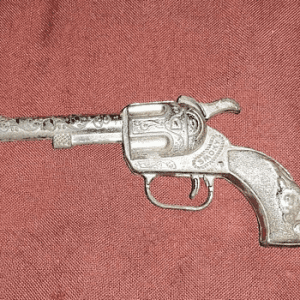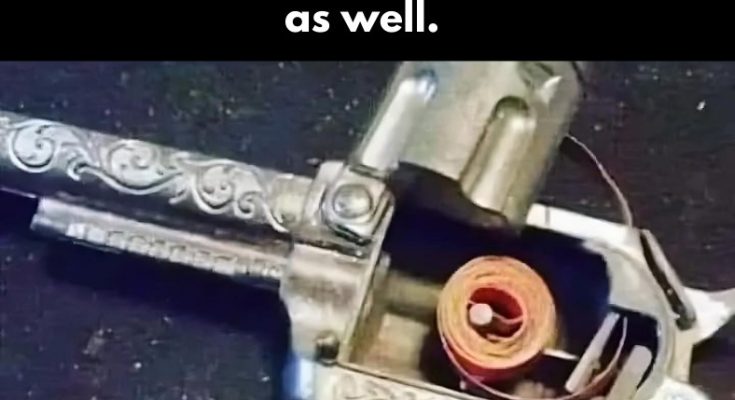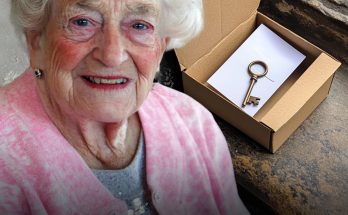Cap guns have been a beloved part of childhood for generations, evoking memories of cowboy adventures and epic backyard battles. These toy guns mimic the loud sounds of real gunfire by igniting small percussion caps. Despite changes in materials, designs, and safety regulations over the years, cap guns remain iconic toys. Let’s dive into their rich history, explore their evolution, and understand the various types of cap guns and caps used today.
What Are Cap Guns and How Do They Work?

A cap gun, also known as a cap pistol or cap rifle, is a toy gun designed to create the sound and smoke of a gunshot. It achieves this by igniting a small explosive disc known as a percussion cap. These caps contain shock-sensitive chemicals that explode when struck, producing a realistic bang.
- Early Materials: Initially, cap guns were made from cast iron.
- Post-World War II Shift: After World War II, manufacturers switched to zinc alloy, making the toys lighter and more affordable.
- Modern Materials: Today, most cap guns are made from plastic, making them safer and cheaper to produce.
The small caps used in these guns are made from a mixture of chemicals like Armstrong’s mixture (a blend of potassium perchlorate, sulfur, and antimony sulfide) sandwiched between paper layers, creating the sound and smoke when struck by the hammer of the cap gun.
A Brief History of Cap Guns: From Real Guns to Toy Versions
Cap guns have a fascinating origin tied to the evolution of real firearms.
1. The Birth of Cap Guns During the Civil War Era
Real guns using percussion caps were first introduced during the U.S. Civil War. The Springfield Model 1855 musket, for example, featured a Maynard tape primer—a roll of paper impregnated with fulminate that ignited when struck. However, it proved unreliable in wet conditions, prompting a return to conventional copper percussion caps.
Once the demand for caps in real firearms decreased, gunmakers started creating toy versions that mimicked the look and feel of these early percussion cap guns.
2. The “Golden Age” of Cap Guns: Post-World War II Boom
The “Golden Age” of cap guns spanned from the late 1940s through the 1960s, coinciding with the rise of Western movies and television shows. During this period, cap guns became immensely popular, and children everywhere wanted to emulate on-screen heroes like Roy Rogers, Gene Autry, and The Lone Ranger.
- Popular Brands: Companies like Nichols, Hubley, Mattel, and Lone Star Toys produced millions of cap guns during this era.
- Western-Themed Names: Cap guns often featured cowboy-inspired names like “Stallion 45,” “Pony,” “Mustang,” and “Cowboy.”
As Western shows faded in popularity, cap gun manufacturers began producing military and secret agent-themed cap guns to match other popular genres.
Types of Cap Guns: From Revolvers to Rifles
Cap guns have been produced in various shapes and sizes, from small pistols to large rifles. Here’s a look at some of the most popular types:
1. Revolver-Style Cap Guns
Revolver-style cap guns were designed to resemble real revolvers, featuring a revolving cylinder that holds cap rings.
- Ring Cap Guns: These guns use circular cap rings with 8 to 12 caps. As the trigger is pulled, the cylinder rotates, bringing a new cap under the hammer.
- Realistic Features: They offer the thrill of loading and firing caps like an actual revolver, making them a favorite among kids and collectors.

2. Strip or Paper Cap Guns
These cap guns use a strip of paper caps that feeds into the mechanism.
- Mechanism: Each trigger pull advances the paper strip forward, aligning the next cap with the hammer.
- Nostalgic Appeal: This design is more common in older models and remains popular for its classic, retro feel.
3. Plug Fire Cap Guns
These cap guns are often manufactured in Japan and are highly realistic, making them popular among collectors and historical reenactors.
- Design: They feature metal construction and are designed to simulate the action of real firearms, including the sound and smoke.
- Use: Although they are primarily for show and reenactments, they offer a unique, lifelike cap-firing experience.
4. Potato (Spud) Guns with Caps
Potato or spud guns sometimes incorporate caps to provide the burst of gas needed to fire a small piece of potato.
- Design: These guns have a small metal cartridge with a recess for a cap at one end and a small opening for the potato projectile.
- Fun Factor: While their range is modest, they add an extra element of fun to traditional cap guns.
Types of Caps: Roll, Ring, and More

Cap guns rely on various types of caps, each offering a different experience. Let’s break down the most common types:
1. Roll Caps
Roll caps consist of paper rolls with small amounts of gunpowder spaced along the length.
- Traditional Style: They’re typically sold in rolls of 50 and are compatible with most vintage cap guns.
- Perforated Variations: Perforated roll caps provide a more consistent feed, reducing jams during firing.
2. Ring Caps
Ring caps are plastic rings that hold between 8 to 12 caps, making them ideal for revolver-style cap guns.
- Popular Choice: They offer a quick-loading mechanism, making them a favorite among children and collectors.
- Plastic Construction: Modern versions are made from plastic, making them safer and more durable.
3. Strip Caps
Strip caps, also known as cap strips, are linear caps arranged in a line and designed to feed into specific types of cap guns.
- Continuous Action: Each trigger pull advances the strip, making them perfect for rapid firing.
- Easy Loading: Strip caps are convenient to use and widely available.
4. Greenie Stick-M-Caps

Manufactured by Mattel, Greenie Stick-M-Caps were peel-and-stick caps used on the back of “Shootin’ Shells,” adding an extra layer of fun.
- Collectible: These caps are rare today, making them a prized collectible among vintage toy enthusiasts.
- Peel-and-Stick Design: They add a unique touch to cap guns, enhancing the realism of the shooting experience.
Safety Regulations for Cap Guns
With their realistic appearance, cap guns have raised safety concerns over the years, leading to significant regulations.
1. Bright Colors and Orange Tips
Starting in 1988, laws required cap guns to feature bright orange, red, or yellow tips or be made entirely in bright colors to distinguish them from real firearms.
- Purpose: This rule was enacted after incidents where children were mistakenly shot by police who believed the toy guns were real.
- Compliance: Most manufacturers now follow these guidelines to ensure the safety of children and the general public.
Conclusion: Cap Guns—From Classic Toys to Collector’s Items
Cap guns have come a long way since their inception during the Civil War era. From sparking the imaginations of children during the “Golden Age” of Westerns to becoming cherished collectibles, these toys have stood the test of time. With various designs, types, and safety improvements, cap guns continue to hold a special place in the hearts of toy enthusiasts and nostalgia lovers alike.



